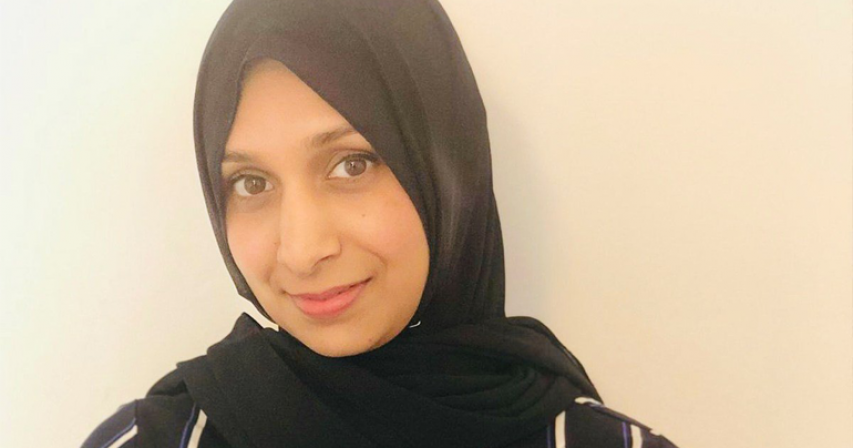Scotland’s first hijabi TV reporter: ‘I want to achieve my positions retaining my Muslim identity’
- 4 years ago

A Muslim woman has become the first hijab-wearing journalist to anchor a report on Scottish TV news, after a ten-year career in journalism.
Tasnim Nazeer, 34, made history following her appearance on STV news reporting on the lack of support for bereaved families in Scotland.
She explained how her attempts at networking to gain work experience or opportunities at shadowing were always dismissed because she would not compromise her hijab.
“I’ve met certain individuals who made it very clear to me that broadcasting is not a space for visibly Muslim women. It is a space that is mainly for white privileged broadcasters and you see this every day on screen,” she said.
Speaking to MEMO, she highlighted prejudice in the profession despite her rich career in journalism focusing on the Middle East and issues such as injustice, corruption and crime affecting underrepresented communities.
Her first article was published in an international Sri Lankan newspaper after the 2004 tsunami when she drew attention to the victims of the disaster who had still not received government aid.
“The discrimination became more apparent when I was freelancing within certain organisations where not a single black or Asian news journalist can be found – not in the newsroom.”
Tasnim, whose parents are Sri Lankan and who has a Master’s degree in international journalism, has reported for numerous top media agencies including the Guardian and Al Jazeera, the Independent, CNN among others.
A certain person I networked with who wasn’t part of the organisation itself but within the media industry within a senior position, directly told me ‘if you want to get into TV broadcasting in Scotland, you need to consider removing your hijab because you’ve got the potential, you’ve got the skills, but you don’t quite have the right look’
She explained the discrimination she faced. She was shocked but stood firm in her identity.
She said: “For somebody to say that to your face not knowing this is not something that I could just take on and off, it means so much more to me. I didn’t know what to do or say but I knew this is obviously not the right place for me if they’re gonna have ideologies like that.”

TV reporter Tasnim Nazeer, 21 August 2020 [Middle East Monitor]
The mother of five emphasised that the media has a problem with representation and points out that the lack of diversity within media broadcasts is not a new issue by any means.
It’s a challenge she has seen replicated across other industries in different ways and which is now emerging as a central theme in all fields due to the Black Lives Matter movement the following killing of George Floyd.
Having a hijabi Muslim woman feature in mainstream media should not be shocking. After all, Muslims in the UK make up nearly six per cent of the population, and an even greater proportion if we look at only younger demographics.
“I want to achieve my positions retaining my Muslim identity, however, many people feel under pressure for various reasons in the media industry because they may face hidden discrimination like this where they’re being told to compromise their identity, this could be wearing a hijab or wearing a turban. I’ve come across other people in the industry who told me about their challenges as well,” said Tasnim.
She feels the perception and ignorance surrounding the hijab often results with people instantly judging rather than accepting and understanding women who chose to wear the hijab.
“I’ve always stuck firm to my belief as I wear the hijab for Allah and I personally never felt that it was a barrier. I’ll rather stay in the same space and not progress rather than lose out on my deen [religion] and what I believe in and stand for,” she explained.
Tasnim aspired to be a journalist from a young age, and never anticipated her ethnic background nor hijab would prove to be a challenge and alienate her from the profession.
“I’ve always stood strong but reached a point of feeling really low because I thought no matter what story I bring, I’ll always be responded with – ‘we will have your stories and we’ll have your contacts and we can just credit you but you’d have to give it to somebody else to report these’.”
“It became really frustrating,” she said:
I was reaching a glass ceiling that I could never break because I kept being reminded that certain spaces in the industry are not for people who look like me.
“I’m glad that STV has become like a role model organisation and is somewhat paving the way forward for other people as well.”
Indeed, Tasnim’s appointment is a positive move for diversity. However, the pace of change has not been enough when it comes to improving the representation of BAME communities on-screen and behind the camera in the UK.
She has therefore set up a petition on Change.org, highlighting the need for better representation and diversity across the media in the UK as a whole.
“It is to help people – not only visibly Muslim women – but also anybody who’s been challenged. I got feedback from people with disabilities, and people of other faiths, like those who wear a turban,” explained Tasnim.
“A predominant number of people that contacted me were black and Asian minority groups to be honest, which is really interesting and worrying as it’s a testament to the fact that more needs to be done. I know media organisations are now investing in diversity and inclusion measures, but they need to back that up with actionable steps.”
The newly appointed TV reporter said that she hopes to use her platform to make sure the call for diversity is heard loud and clear.
Comments